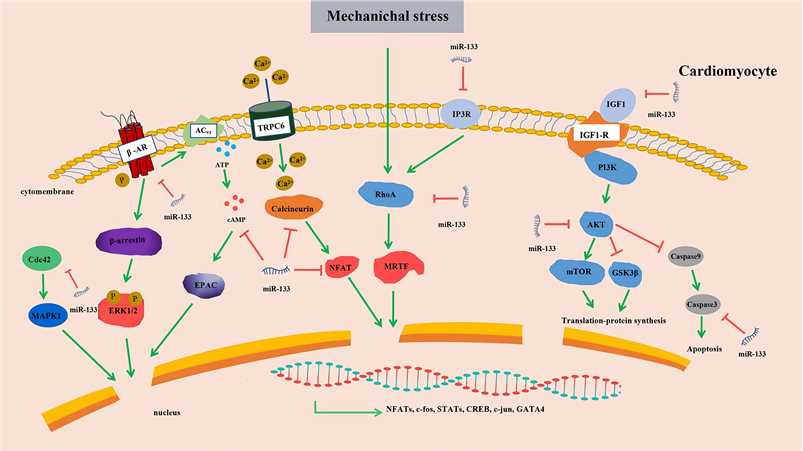As an unparalleled pioneer of in vitro diagnostics (IVD) development, Creative Biolabs offers custom service to develop various high-quality IVD antibodies for miR-133a marker. Our IVD antibodies are available for diagnosis of a variety of cardiovascular diseases, including cardiac hypertrophy, mulberry heart disease, cardiomyopathy, heart failure, etc.
MicroRNAs (miRNAs) are endogenous, small conserved ribonucleotides and about 23 nucleotides long, modulating genes by post-transcription repression. miRNAs emerge in the blood in a significantly stable form and has present as potential diagnostic markers in patients with cardiovascular disease. MicroRNA-133 (miR-133) is one of the most investigated and best-characterized miRNAs so far, and it is indispensable for proper skeletal and cardiac muscle development and function. Besides, miR-133 is closely related to cell specification, differentiation, and is downregulated during cardiac hypertrophy, indicating that it may act a role in the underlying pathogenesis. miR-133 has two types: miR-133a and miR-133b, besides, miR-133a has two alleles: miR-133a-1 and miR-133a-2. miR-133a is formed in the skeletal muscle and heart while miR-133b is produced just in the skeletal muscle. The generation of miR-133a is managed by serum response factor (SRF) and myosin enhancer factor-2 (Mef2) in the myocardium.
miR-133a Marker of Cardiovascular
Cardiovascular disease (CVD) is involved in the circulatory system, which contains the heart and blood vessels and conveys nutrients and oxygen to the tissues of the body. CVD are situations that influence the heart and blood vessels, such as heart valve disease, heart failure, coronary artery disease, and many other diseases. miRNAs enable to be measured in circulating blood and play as a novel group of blood-based biomarkers. It was demonstrated that miR-133a served an important role in the regulation of cardiac hypertrophy, epigenetic modification, fibrosis, and β-AR signaling. Studies also indicated that miR-133a was a potential therapeutic target for cardiomyopathy. miR-133a is highly expressed in cardiac and skeletal muscle, and its concentrations are reduced in mulberry heart disease (MHD) patients with left ventricular hypertrophy (LVH). The miR-133a level was negatively connected with LVMI (an indicator of LVH) as reported, thus circulating miR-133a could be a promising marker of cardiac hypertrophy in MHD patients.
 Fig.1 Targets of miR-133 in cardiomyocytes.1
Fig.1 Targets of miR-133 in cardiomyocytes.1
IVD Antibodies of miR-133a Marker
IVD antibodies are extensively used as diagnostic tools in several different ways. Antibody-based immunoassays are the most commonly used diagnostic methods and are the fastest developing technologies for the analysis of biomolecules. Creative Biolabs offers customers many IVD antibodies against miR-133a marker to diagnose cardiovascular diseases. With our high-affinity IVD antibodies development service, we are confident in providing a great contribute to the success of your projects.
Creative Biolabs also provides IVD antibodies for various other targets. Please feel free to contact us for more information and a detailed quote.
Reference
- Li, Ning, Heng Zhou, and Qizhu Tang. "miR-133: a suppressor of cardiac remodeling?" Frontiers in pharmacology 9 (2018): 903. Distributed under Open Access license CC BY 4.0, without modification.
For Research Use Only.

